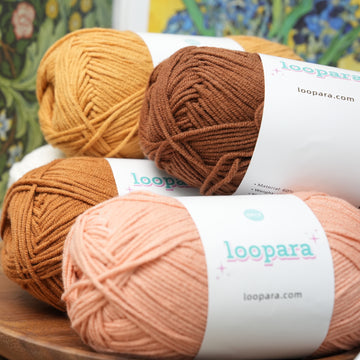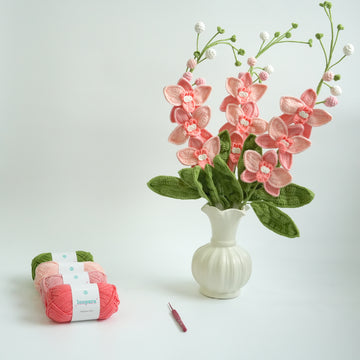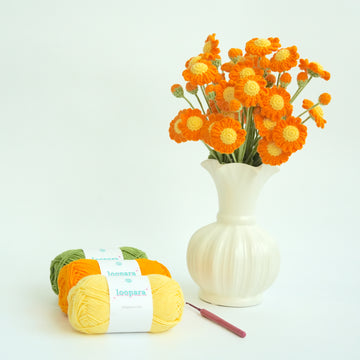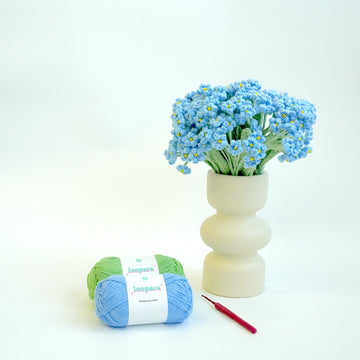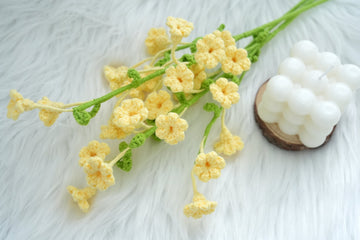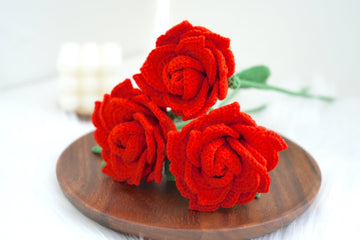Making mittens and gloves is a wonderful way to create something both beautiful and practical. But choosing the right yarn can mean the difference between cozy hands and cold fingers.
Let's dive into everything you need to know about selecting the perfect yarn for your hand-warming projects.
Why Yarn Choice Matters for Mittens and Gloves
When it comes to mittens and gloves, your yarn choice matters more than you might think.
These items take quite a beating - they're stretched as we put them on and off, exposed to moisture from snow and rain, and subjected to constant friction as we use our hands.
The right yarn won't just keep hands warm - it'll ensure your creation lasts more than one season.

Best Yarn Types for Mittens and Gloves
1. Wool: Your Cozy Best Friend
Traditional wool remains one of the best choices for mittens and gloves, and there's good science behind this.
Wool creates tiny air pockets that trap warmth, and it continues to insulate even when damp. It's naturally water-resistant and has inherent elasticity that helps your mittens keep their shape.
Merino wool deserves special mention here. Its fine fibers make it incredibly soft against the skin, and it's less likely to cause itching than other wools.
For those making gloves or mittens for children or people with sensitive skin, merino wool should be your first choice.
2. Premium Cotton Blends: Comfort Meets Style
For those seeking a softer alternative or working in milder climates, Loopara Milk Cotton Yarn offers an excellent option.
The 4-ply version creates lightweight gloves and mittens perfect for spring and fall, with exceptional softness that's particularly comfortable for sensitive skin. The milk protein fibers add a luxurious feel while maintaining good stitch definition.
The 5-ply option provides additional warmth and structure, making it suitable for winter gloves in moderate climates. Both versions offer minimal splitting and excellent drape, resulting in gloves and mittens that look professionally crafted.
While slightly pricier than basic cotton yarns, the quality and comfort make it worth considering, especially for special occasions or when making fingerless gloves that will be in direct contact with the skin.
3. Superwash Wool: Practicality Meets Comfort
Superwash wool offers all the benefits of regular wool with one significant advantage - you can toss it in the washing machine. This makes it perfect for everyday mittens and gloves that need regular cleaning.
The treatment process that makes the wool machine-washable also tends to make it softer, which is a bonus for next-to-skin items like gloves.
4. Wool Blends: The Best of Both Worlds
Wool blended with nylon or acrylic creates a particularly durable yarn that's perfect for mittens and gloves.
The wool provides warmth and moisture-wicking properties, while the synthetic fibers add strength and help the mittens keep their shape. Look for blends with at least 20% nylon for the best durability.
5. Alpaca: Luxury Warmth
Alpaca fiber is incredibly warm - even warmer than wool - and wonderfully soft. It's also naturally water-resistant and contains no lanolin, making it a great choice for those with wool allergies.
However, pure alpaca can stretch out over time, so for mittens and gloves, consider an alpaca-wool blend for better shape retention.

Yarn Weights for Different Styles
Fingering Weight for Delicate Gloves
When making finely detailed gloves with individual fingers, fingering weight yarn (2) is often your best bet. It allows you to create the detailed shaping needed without bulk, especially around the fingers.
This weight is particularly good for dress gloves, fingerless gloves with detailed patterns, and lightweight gloves for cool (not cold) weather.
DK and Worsted for Versatility
DK (3) and worsted weight (4) yarns are perhaps the most versatile choices for mittens and gloves.
They work well for both children's and adult sizes, provide good warmth without excessive bulk, and are readily available in a wide range of fibers and colors.
Aran and Bulky for Extra Warmth
For extremely cold weather or quick-to-make projects, consider Aran (4) or bulky (5) weight yarns.
These create exceptionally warm mittens, though they might be too thick for detailed glove work. They're perfect for outer mittens in very cold climates, quick gift projects, and children's mittens that need to be highly visible.
Special Considerations
Double-Layer Mittens
If you're planning to make double-layer mittens (a wonderful choice for very cold weather), consider using different yarns for each layer.
A soft, fine wool for the inner layer and a more durable wool/nylon blend for the outer layer works particularly well.
Wearing and Washing
Think about how the mittens or gloves will be used and cared for. Making children's mittens? Super-wash wool or a durable synthetic blend might be your best choice. Creating luxury dress gloves?
You might opt for a premium fiber like cashmere or silk-blend yarn, or the Loopara Milk Cotton Yarn for its exceptional softness and elegant finish.
Color Choice Matters
When selecting yarn for mittens and gloves, remember that darker colors show wear less readily than lighter ones. This is particularly important for the palm area, which takes the most abuse.
Practical Tips for Success
Always buy an extra ball of yarn for mittens and gloves. They're small projects, but having to switch dye lots mid-mitten can be very noticeable. Plus, you'll have yarn available for repairs if needed.
Make a swatch and wear it inside your winter coat sleeve for a few minutes. This will give you a good idea of whether the yarn might be itchy against your skin and how warm it actually is.
Store your yarn label. Mittens and gloves often need replacing after a few years of wear, and having the exact yarn information will make it easier to make a matching pair later.
Final Thoughts
The best yarn for your mittens or gloves depends largely on their intended use. A pair of delicate dress gloves needs different yarn than heavy-duty snow mittens. Consider your climate, the intended wearer, and care requirements when making your choice.
Remember that while premium yarns might cost more initially, mittens and gloves are small projects that don't require much yarn. This makes them perfect for splurging on that luxury fiber you've been eyeing, whether it's a high-end wool blend or the beautifully soft Loopara Milk Cotton Yarn. After all, few things are more satisfying than warm, cozy hands on a cold winter day, wrapped in mittens you've made yourself from just the right yarn.
Whether you choose traditional wool, practical superwash, or luxurious alpaca, matching your yarn to your project's needs will help ensure your mittens and gloves are worn and loved for years to come.


